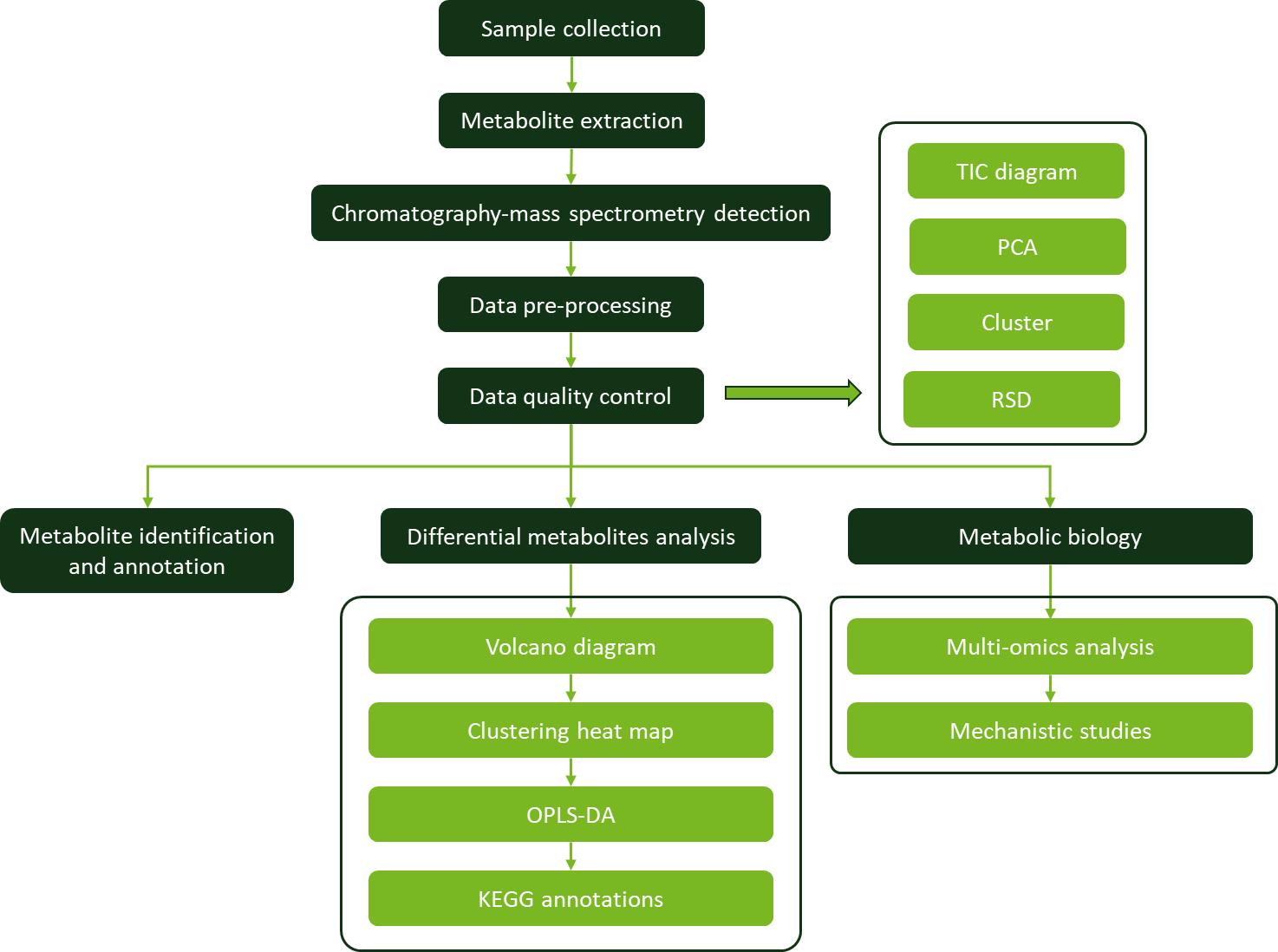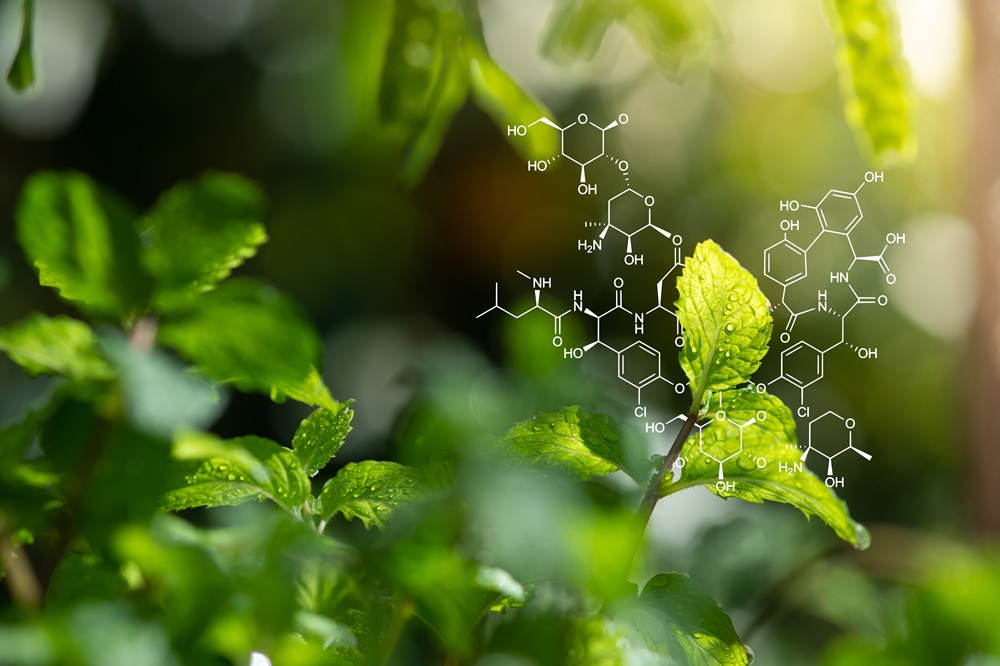What is Myrcene?
Myrcene is a monoterpene widely present in various plant species, including cannabis, hops, lemongrass, and thyme. Characterized by its earthy, musky aroma, myrcene is a significant component in the essential oils of these plants. It plays a crucial role in the sensory attributes of many plant-based products, contributing to their distinctive olfactory profiles.
The analysis of myrcene holds significant importance across multiple fields, including pharmaceuticals, food and beverage, and agriculture. Myrcene, a prominent monoterpene, contributes to the aromatic profile and therapeutic potential of various plants, including cannabis. Precise quantification and characterization of myrcene are essential for understanding its role in enhancing the therapeutic effects of other cannabinoids through the entourage effect. Furthermore, myrcene analysis aids in the standardization and quality control of products, ensuring consistency and efficacy.
What Myrcene Analysis Services Do We Provide?
Creative Proteomics offers a comprehensive myrcene analysis service designed to deliver both qualitative and quantitative insights into the myrcene content of various samples. Creative Proteomics offers the following specific programs in plant metabolomics analysis services of myrcene:
Qualitative Analysis: Qualitative analysis aims to confirm the presence of myrcene within a sample. This process involves the identification of myrcene through advanced chromatographic and spectrometric techniques.
Quantitative Analysis: Quantitative analysis provides detailed measurements of myrcene concentration. Accurate quantification is vital for regulatory compliance, product standardization, and research applications that require detailed compositional data.
Isomeric Analysis: Myrcene exists in different isomeric forms, which may exhibit varying properties and effects. The isomeric analysis conducted by Creative Proteomics differentiates between these forms, providing a deeper understanding of the structural variations of myrcene.
Profiling of Complex Samples: Creative Proteomics offers a thorough profiling service to identify and quantify myrcene across a wide range of complex sample matrices.
Stability and Degradation Studies: Our analysis extends to evaluating the stability and degradation of myrcene under various conditions. This includes assessing the impact of environmental factors such as temperature, light, and oxygen on the stability of myrcene in different formulations.
Comparative Analysis of Terpene Profiles: Our service includes comparative analysis of terpene profiles between different samples or product batches. This is particularly useful for evaluating variations in myrcene content and other terpene components.
Techniques and Instrumentation for Myrcene Analysis
Gas Chromatography-Mass Spectrometry (GC-MS): Using the Agilent 6890 GC and Agilent 5973 Mass Spectrometer for precise identification and quantification of terpineol isomers by separating compounds based on volatility and mass.
Thermo-Desorption / GC-MS: For air quality applications, using the Thermo Scientific TDX-201 Thermo-Desorption System with the Agilent 6890 GC and Agilent 5973 Mass Spectrometer to analyze terpineol in air samples using specialized absorbent tubes.
liquid chromatography-mass spectrometry (LC-MS) with HRMS: Utilizing the Thermo Scientific Q Exactive Plus Hybrid Quadrupole-Orbitrap Mass Spectrometer. The advanced capabilities of LC-MS with HRMS ensure high sensitivity and specificity in detecting and quantifying terpineol and its derivatives within various biological matrices.

Applications of Myrcene Analysis
Pharmaceutical Industry: Myrcene analysis is essential for developing and optimizing medications with analgesic, anti-inflammatory, and sedative properties. Accurate quantification ensures precise dosages and enhances the therapeutic potential of cannabis-derived products.
Agricultural Research: Analyzing myrcene content in plants assists in breeding new varieties with enhanced aromatic and therapeutic properties. It also contributes to developing pest-resistant crops, reducing the need for chemical pesticides.
Environmental and Botanical Studies: Myrcene analysis helps understand plant interactions with herbivores, pollinators, and pathogens. This knowledge informs conservation efforts and sustainable resource management.
Food and Beverage Industry: In the food and beverage industry, myrcene analysis standardizes flavors and aromas in products like mangoes and hops. Highlighting myrcene's health benefits appeals to health-conscious consumers.
Cosmetic and Personal Care Products: In cosmetics, myrcene analysis ensures the consistency and quality of fragrances and skincare products. Myrcene's pleasant aroma and skin benefits make it a valuable ingredient.
Sample Requirements for Myrcene Analysis
| Sample Types |
Sample Size |
Biological Repeat |
| Plant Samples |
Leaves, stems, flowers, or whole plant extracts |
≥ 1 g (solid), ≥ 1 mL (liquid) |
3-6 |
| Animal Samples |
Tissue extracts, blood samples |
≥ 1 g (solid), ≥ 1 mL (liquid) |
| Cell Samples |
Cultured cells, cell lysates |
≥ 1x10-6 cells |
Q1: What are the deliverables included in the myrcene analysis service?
A1: Our myrcene analysis service includes a comprehensive package of deliverables: detailed experimental procedures, relevant mass spectrometry parameters, comprehensive myrcene analysis data, raw data files, custom analysis report summarizing findings and interpretations.
Q2: Can you provide customized analysis solutions to address specific research objectives?
A2: Absolutely. We understand that different projects have unique requirements. Our team of experts can work with you to develop customized analysis solutions tailored to your specific research objectives. Whether you need specialized sample preparation, targeted analysis, or specific reporting formats, we are committed to meeting your needs.
Case. Microbial Synthesis of Myrcene by Metabolically Engineered Escherichia coli
Background
Myrcene is a valuable starting material for high-value compounds such as geraniol, linalool, and (−)-menthol. Although metabolic engineering has been applied to produce other monoterpenes like pinene and limonene in microbial hosts, the microbial synthesis of myrcene has not been reported. The study addresses the challenges of myrcene production in microbial hosts, including the broad functionality of MSs and the cellular toxicity of myrcene.
Samples
Escherichia coli DH5α: Used as a host for cloning and metabolic engineering.
Plasmids and Strains: Various plasmids were constructed using the BglBrick expression plasmid library, containing genes necessary for the MVA pathway and myrcene production.
Myrcene Production Strains: E. coli DH1 strains co-transformed with different combinations of MevT-MBI and myrcene production plasmids.
Technical Methods Procedure
Construction of Plasmids and Strains: Plasmids were constructed with genes from Saccharomyces cerevisiae for the heterologous MVA pathway and with genes for myrcene synthase (MS) and geranyl diphosphate synthase (GPPS) for myrcene production. Gene cloning was done using PCR and vectors, creating plasmids like pM1 and pM2.
Growth Conditions: E. coli DH1 was tested for myrcene toxicity in EZ-rich medium. For myrcene production, strains were grown in various media with glucose or glycerol, and IPTG was used for induction. Myrcene was extracted using dodecane overlay.
Myrcene Analysis and Quantification: Myrcene was extracted into dodecane, diluted with ethyl acetate, and analyzed by gas chromatography–mass spectrometry (GC-MS) to measure its levels.
Results
Subsequent engineering optimized the levels of GPPS in amino-acid-enriched defined medium with glycerol as a carbon source, enhancing myrcene production to 58.19 ± 12.13 mg/L.
Implementing in situ two-phase extraction significantly improved myrcene production by mitigating cellular toxicity and evaporation of myrcene.
Myrcene exhibited cellular toxicity at various concentrations, impacting the growth of E. coli. The in situ extraction technique helped alleviate this issue, supporting higher production levels.

Reference
- Darshani, et al. (2023). Chemical composition and chiral analysis of β-myrcene rich essential oil from Glossocardia bosvallia (Lf) DC. Natural Product Research, 37(3), 498-501.









